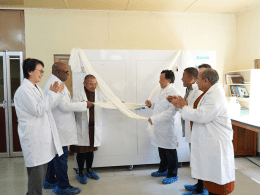The rolling drylands of Bepzur in Tang Gewog are turning golden as sweet buckwheat fields stretch across the village. With a new flour mill in operation and rising market demand, farmers are now cultivating the crop on a scale never seen before, pinning their hopes on it as a new source of income. But even as the profits grow, so do the challenges.
Once grown mainly for home consumption, sweet buckwheat has rapidly become one of Bepzur’s most promising cash crops. Farmers say easy market access and the installation of a flour processing mill last year have motivated them to increase production.
A Season of Expansion
Among them is 40-year-old Tshewang Lhamo, who has more than doubled her cultivation area—from 50 decimals last year to 1.5 acres this season. She now sells buckwheat flour from her doorstep for Nu 120 per kilogram, and the demand, she says, has been steady.
“In the past, there was no market and wildlife destroyed our crops. We grew buckwheat just for our families,” Tshewang shared. “Now, with increasing demand, we can sell easily and earn good profit. But this year, heavy rains and wild boars have damaged much of the crop.”
Wildlife Woes and Weather Worries
Bepzur’s farmers share similar struggles. Wild boars have become a major threat, ravaging fields and undoing months of hard work.
Palden Sangay, 49, surveys the damage on his two-acre field with frustration. “Fresh boar droppings are everywhere,” he said. “Last year, I made a good profit, so I prepared the land more carefully this season. But the animals keep coming.”
Electric fencing, once an effective deterrent, is now proving inadequate. “We used to sleep peacefully last year,” said Sangay Phurba, another farmer. “This time, we spend nights guarding our fields, and still the boars find a way in.”
The challenges extend beyond wildlife. Unpredictable weather patterns, including incessant rains, have also taken a toll, washing away hopes of a full harvest for many.
Market Confidence and New Opportunities
Despite the setbacks, optimism persists. Farmers say the multifunction flour mill, established last year by the Bhutan Association of Women Entrepreneurs (BAOWE) with government co-funding, has transformed their outlook. The machine can process up to 180 kilograms of flour per hour, providing a vital link between rural producers and national markets.
“There’s no problem selling what we grow,” said Yeshi, a resident farmer. “People call us asking for wheat, barley, and buckwheat flour. If only the wild boars would stop destroying the fields, life would be much easier.”
A Step Toward Food Self-Sufficiency
The story of Bepzur’s buckwheat farmers reflects a larger national goal: boosting local production and reducing dependence on imports. With government and community initiatives aligning, sweet buckwheat may well help Bhutan move closer to its food self-sufficiency target by 2029.
For now, Bepzur’s fields stand as both a symbol of progress and a reminder of resilience — where every grain harvested represents not just profit, but perseverance.








